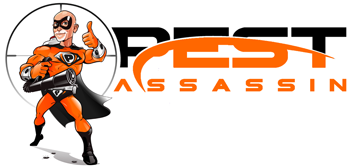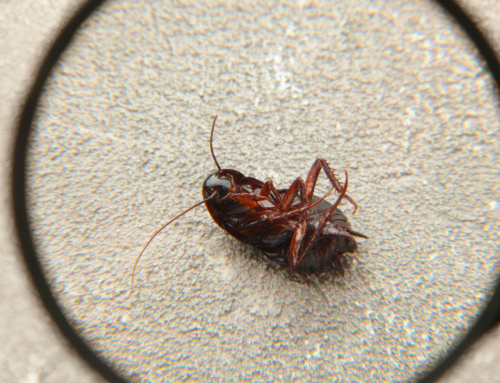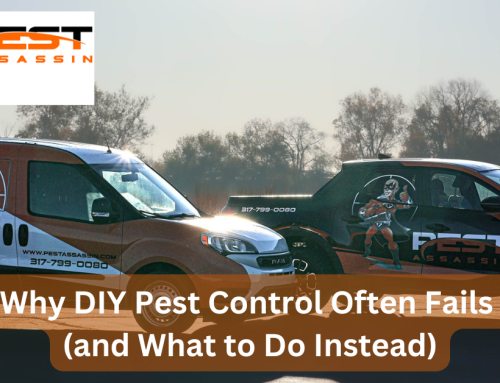Businesses today face a growing array of challenges from pests that threaten their operations, reputation, and the well-being of both customers and employees.
Traditional pest control approaches, often characterized by reactive treatments and a reliance on broad-spectrum solutions, are proving inadequate in the face of evolving pest behaviors and increasing business demands.
That’s why many companies are actively transitioning to smarter, more strategic pest control methodologies.
These modern commercial pest control strategies emphasize prevention, early detection, and highly targeted solutions, offering a more sustainable solution to pest control.

Understanding the Shift Toward Smarter Pest Control
Smarter pest control represents a fundamental shift in how businesses approach pest challenges. Instead of simply reacting to infestations as they occur, this approach focuses on proactive measures designed to prevent pests from gaining a foothold in the first place. It prioritizes methods that minimize disruption to business activities while maximizing long-term effectiveness.
At the heart of smarter pest control lies the principle of Integrated Pest Protocols (IPP)
Integrated pest management is a holistic approach that combines multiple tactics to create an environment that is inhospitable to pests. This includes identifying and sealing potential entry points, implementing rigorous sanitation practices, and conducting regular monitoring for early signs of pest activity. B
Before, businesses simply sprayed and hoped for the best. Today, this is no longer the case.
Preventative Practices
These practices include:
- Scheduled Inspections and Continuous Monitoring: Consistent checks are performed, which facilitates the early detection of any pest activity. This enables timely action to be taken before infestations have a chance to escalate, resulting in significant savings in both time and resources.
- Effective Sanitation and Waste Protocols: Maintaining a high standard of cleanliness within the business premises is crucial in eliminating the food and water sources that attract pests. Implementing proper waste procedures, utilizing sealed trash receptacles, and ensuring the prompt removal of garbage are essential steps in reducing pest allure.
- Strategic Sealing of Entry Locations: Pests are adept at exploiting even the smallest cracks and gaps to gain entry into buildings. Businesses are now investing in sealing doors, windows, vents, and other potential entry points to create a physical barrier against pest intrusion.
These measures are proactive steps that form the cornerstone of a successful pest prevention strategy.
Why Traditional Methods Fall Short
Traditional pest protocols often involve scheduled applications, regardless of whether pests are actually present. This approach can lead to the overuse of treatments, the development of resistance among pest populations, and the overlooking of early warning signs that could have prevented a full-blown infestation. Moreover, such strategies can be disruptive to business operations and may fail to address the underlying factors contributing to pest problems.
Today’s protocols, in contrast, place a strong emphasis on understanding the behavior of pests and the specific risks facing each business.
Key Considerations for Businesses
When selecting pest protocols, businesses should look for providers that offer:
- Customized protocols based on a thorough assessment of the business’s unique needs and risk factors.
- The utilization of multiple protocols, not just treatments.
- Transparent communication and detailed reporting on pest activity and protocol effectiveness.
- Training programs for staff to increase awareness of pest prevention strategies.
- Ongoing monitoring and follow-up visits to ensure continued success.
The Importance of Addressing the Root Cause
Beyond the immediate elimination of pests, today’s pest control emphasizes addressing the root causes that attract pests in the first place. This may involve structural modifications to eliminate entry points, improvements to sanitation practices to remove food sources, or adjustments to environmental conditions to reduce humidity and moisture levels. By addressing these underlying issues, businesses can create a less hospitable environment for pests, reducing the likelihood of future infestations.
Moreover, modern pest protocols often incorporate educational components to empower employees to play an active role in prevention.
By training staff to recognize the signs of pest activity, implement proper sanitation procedures, and report potential issues promptly, businesses can create a culture of vigilance that supports long-term pest prevention efforts.
The Future of Pest Protocols
As technology continues to evolve and our understanding of pest behavior deepens, the future of pest protocols is likely to be characterized by even greater precision, efficiency, and sustainability. Advances in areas such as genetic analysis, behavioral ecology, and data analytics are paving the way for new and innovative protocols that can target pests with unprecedented accuracy while minimizing the impact on the environment.
By staying informed about the latest developments in pest control protocols and partnering with experienced providers committed to innovation, businesses can ensure they are well-positioned to meet tomorrow’s challenges and maintain a pest-free environment for years to come.
Conclusion
As the business landscape becomes increasingly competitive and consumers demand greater accountability, embracing a smarter approach to pest protocols is a strategic imperative for long-term success.
Working with a pest control company who stays updated with the latest in pest control is the best way to position your business against pest infestations today and going forward.




